GODSON Emergency Exit Light Feature
1. High reliability. Emergency Lighting Battery can be reliably powered in an emergency. The power supply is the first purpose of the battery, as long as the components can run without damage, the power supply can not be stopped.
2. Monitored. Although the emergency lighting battery is used on special occasions, the emergency diesel generator set should be tested regularly.
3. Maintenance free: this manifested in two aspects: the battery charging and discharging is completed by the intelligent integrated chip. Emergency Lighting Products can send out the state warning signal.
4. The system is simple and the control is convenient. The type of emergency battery is not single, a combination of several power supplies can be used.
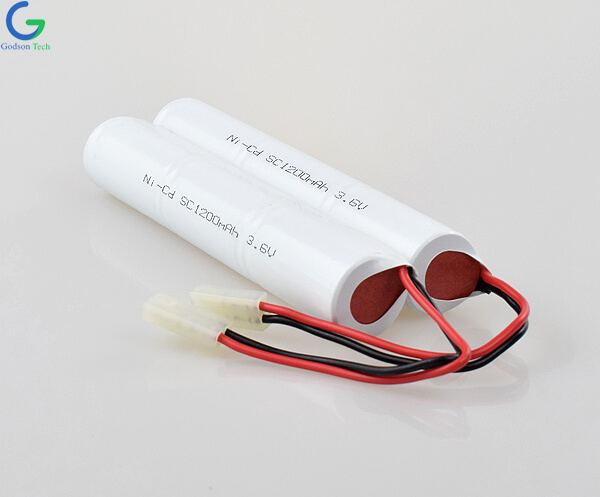
Emergency Lighting and Exit Sign Types
Emergency lighting and exit signs are important components of security systems designed to protect people in various facilities. The key purpose of these measures is to provide illumination and clear guidance during critical situations, ensuring safe evacuation of people.
Emergency Lighting Types
Backup Lighting: Backup lighting is used as a backup lighting source during power outages. It is strategically applied to areas where insufficient light may pose a safety risk, allowing occupants to navigate and perform necessary tasks until power is restored.
Emergency Escape Lighting: Emergency escape lighting is specifically designed to illuminate escape routes, including stairways, hallways, and exits. It ensures clear visibility and helps individuals safely navigate to designated emergency exits, facilitating efficient evacuation in emergency situations.
High-risk Task Area Lighting: High-risk Task Area Lighting focuses on providing targeted lighting in areas where critical activities are taking place. This type of emergency lighting is tailored to specific locations, such as medical operating rooms or manufacturing sites, to ensure sufficient visibility for safe operations.
Types of Exit Signs
Photoluminescent Exit Signs: Photoluminescent exit signs absorb and store ambient light, making them clearly visible in low-light conditions. These signs do not rely on electricity, providing energy savings and reliable visibility in emergency situations.
Powered Exit Signs: Powered exit signs are connected to a power source and are typically illuminated using LED lights. They provide consistent visibility and reliability, especially in well-lit areas.
Requirements and Standards for Exit Signs and Emergency Lighting
National Fire Protection Association (NFPA)
Exit Signs
NFPA 101 - Life Safety Code details requirements for acceptable lighting forms, locations, and visibility for exit signs.
Section 7.10.1.2 states that all exit signs must be illuminated by a reliable light source and must be legible in both normal and emergency exit lighting modes. Exterior illuminated signs must have an illuminance of not less than 5 foot-candles (54 lux) on the illuminated surface and a contrast ratio of not less than 5 out of 10. Interior illuminated signs must comply with and meet the requirements of ANSI//Underwriters Laboratory (UL) 924, Standard for Emergency Lighting and Power Devices.
The code states that any new exit sign must be placed at any point in the exit path no further than the sign's rated viewing distance or 100 feet, whichever is less, from the nearest sign. Also, an exit sign with a directional indicator must be placed at every location where the direction of travel to the nearest exit is not clearly visible.
The Life Safety Code states that the location and size, color, and design of the sign must be clearly visible and must contrast with the background on which it is placed. The code also states that no ornaments, furniture, or equipment may be used that would obstruct the visibility of the sign. No brightly illuminated sign (for non-exit purposes), display, or object that would distract attention from the exit sign may be placed in or near the line of sight of a required exit sign.
Emergency Lighting
Emergency lighting requirements are found in Section 7.9 of the Life Safety Code. Here are some key points:
When normal lighting fails, emergency lighting must be provided for at least 1.5 hours (when required).
Emergency lighting must be arranged so that the initial illuminance does not fall below an average of 1 foot-candle (10.8 lux) when measured along the ground level egress path, and the minimum illuminance does not fall below 0.1 foot-candle (1.1 lux) at any point. At the end of the emergency lighting period (1.5 hours), these illuminance levels may be reduced to a minimum average of 0.6 foot-candle (6.5 lux) with a minimum illuminance of not less than 0.06 foot-candle (0.65 lux) at any point.
The maximum illuminance at any point may not exceed 40 times the minimum illuminance at any point to prevent spots that are too bright or too dark (Section 7.9.2.1.3).
Emergency lighting systems must be set up to automatically provide lighting when normal lighting is interrupted.
Joint Commission on Accreditation of Healthcare Organizations (JCAHO)
JCAHO has established specific requirements for healthcare facilities to ensure the safety of patients, staff, and visitors. Its standards include provisions for emergency lighting, exit signs, backup power systems, and testing protocols to ensure that emergency lighting in critical areas continues to operate.
Authority Having Jurisdiction (AHJ)
AHJs are local authorities responsible for enforcing building codes and regulations. They play an important role in overseeing compliance with emergency lighting requirements within a specific jurisdiction. AHJs may adopt and enforce relevant codes, such as the International Building Code (IBC) or the International Fire Code (IFC), which contain provisions for emergency lighting and exit signs.
Emergency Lighting Testing Requirements
Regular testing of emergency lighting systems is essential to ensure that they function properly during an emergency. Section 7.9.3 of the Life Safety Code provides requirements for regular testing of emergency lights. NFPA recognizes three types of emergency lights - conventional, self-testing/self-diagnostic, and computer-based self-testing/self-diagnostic. The testing requirements are as follows:
Perform an activation test once a month with the lights remaining on for at least 30 seconds.
Perform an annual test with the lights on for 1.5 hours to simulate a prolonged emergency event.
Monthly and annual test documentation is subject to review by the AHJ.
For emergency lighting systems, it is critical to meet the necessary requirements and adhere to established standards. Several organizations and regulatory agencies provide guidance to ensure the safety and effectiveness of these systems.
Occupational Safety and Health Administration (OSHA)
OSHA does not have specific regulations regarding emergency lighting, but OSHA 1910.37 has requirements for lighting and marking exit routes. According to the standard, lighting and marking must be adequate and suitable. The standard states that all exit routes must be adequately lit so that any employee with normal vision can see along the route. Here are other requirements:
Each exit must be clearly visible and marked with an "EXIT" sign.
Each exit route door must not have any decoration or markings that obscure the visibility of the exit route door.
If the direction to the exit or exit drain is not obvious, signs must be posted along the exit route indicating the direction to the nearest exit and exit drain. In addition, the sight line of the exit sign must be clearly visible at all times.
Each doorway or passageway on the exit route that could be mistaken for an exit must be marked "NOT EXIT" or similar, or identified by a sign indicating its actual purpose (e.g., closet).
Each exit sign must have a surface luminance value of at least 5 foot-candles (54 lux), be illuminated by a reliable light source, and be of a distinct color. Self-luminous or electroluminescent signs with a minimum surface luminance value of at least 0.06 foot-lamberts (0.21 cd/m2) are permitted.
Each exit sign must have the word "Exit" in legible letters not less than 6 inches (15.2 cm) in height, and the primary stroke width of the letters in the word "Exit" must not be less than three-quarters of an inch (1.9 cm).
Under 1910.35, OSHA cites NFPA 101 (Life Safety Code) and the International Code Council's International Fire Code as meeting its compliance requirements.

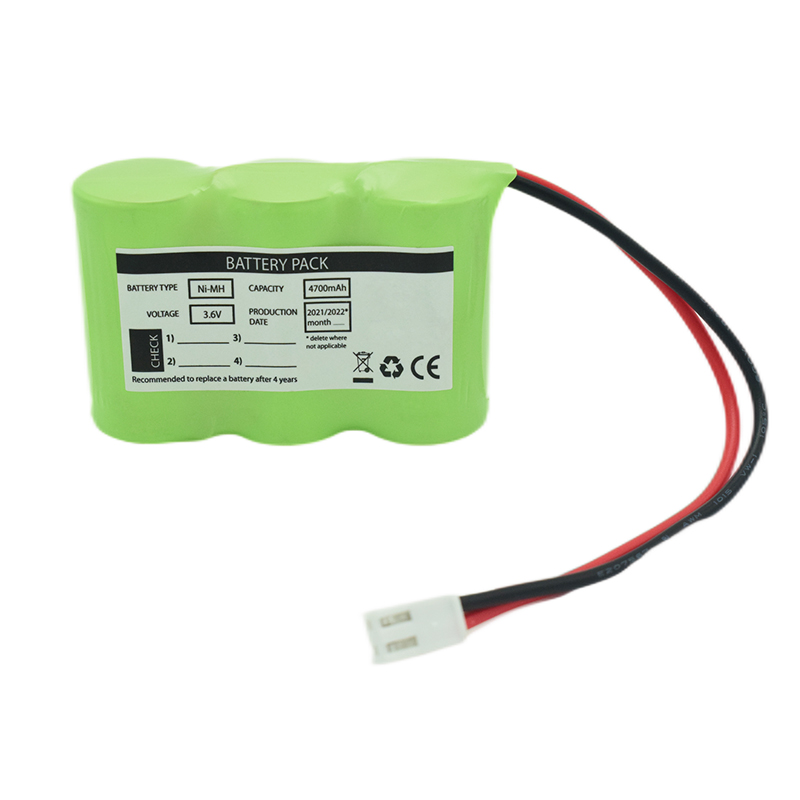 Ni-MH Battery C4700mAh 3.6V
Ni-MH Battery C4700mAh 3.6V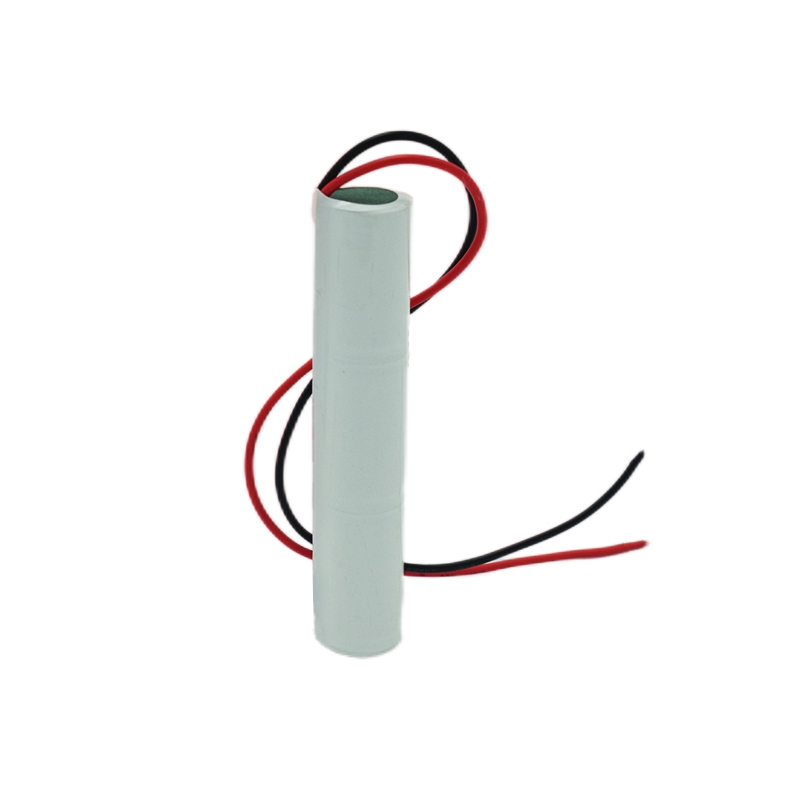 Nickel Cadmium Nicd Battery Pack SC1800mAh 3.6V
Nickel Cadmium Nicd Battery Pack SC1800mAh 3.6V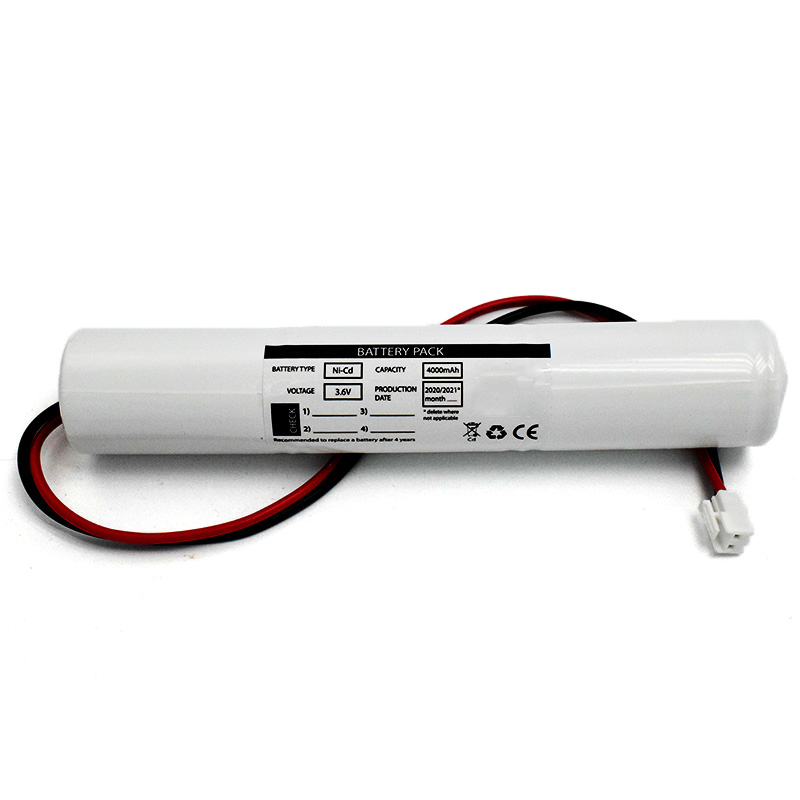 Ni-Cd Battery Pack D4000mAh 3.6V
Ni-Cd Battery Pack D4000mAh 3.6V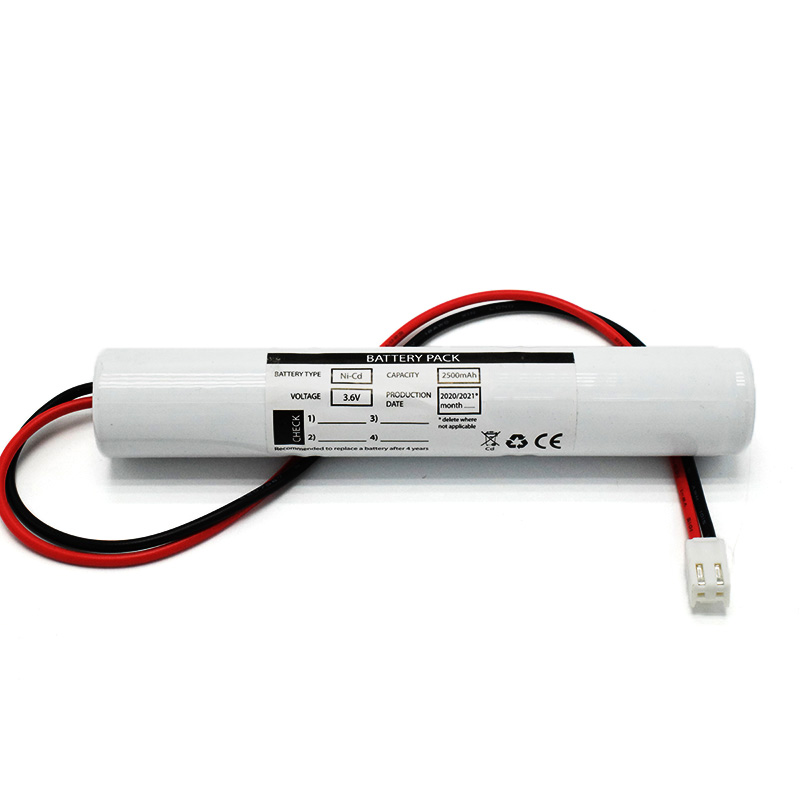 Ni-Cd Battery Pack C2500mAh 3.6V
Ni-Cd Battery Pack C2500mAh 3.6V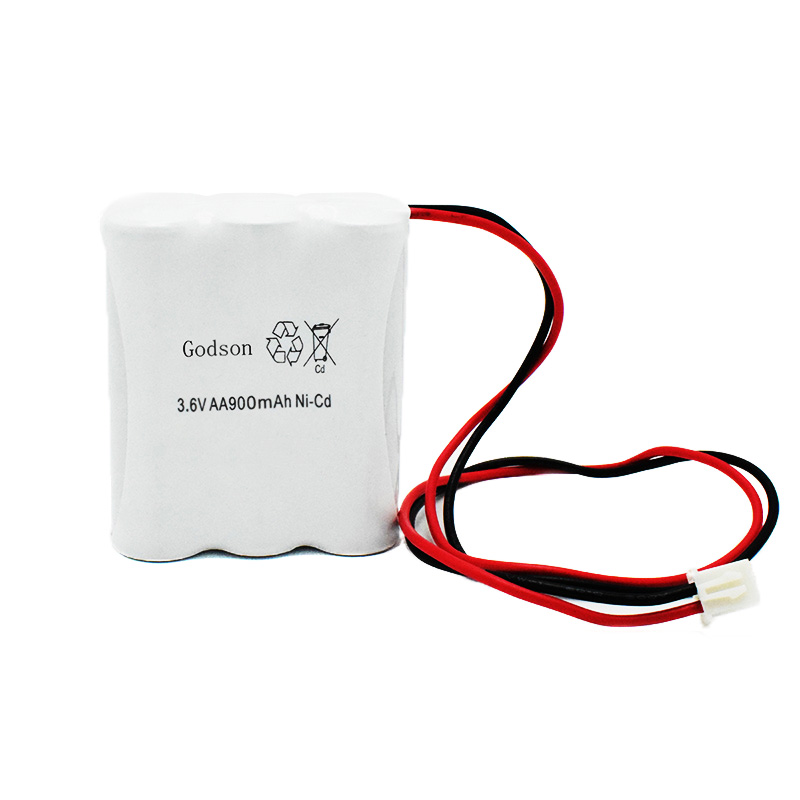 NICAD Battery Pack AA900mAh 3.6V
NICAD Battery Pack AA900mAh 3.6V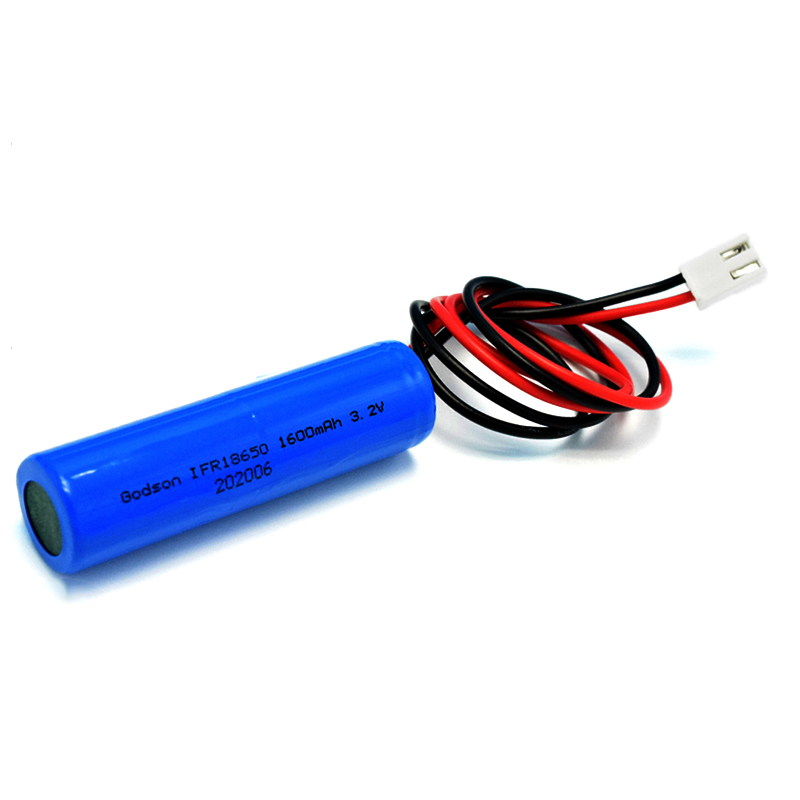 LiFePO4 IFR18650 1600mAh 3.2V
LiFePO4 IFR18650 1600mAh 3.2V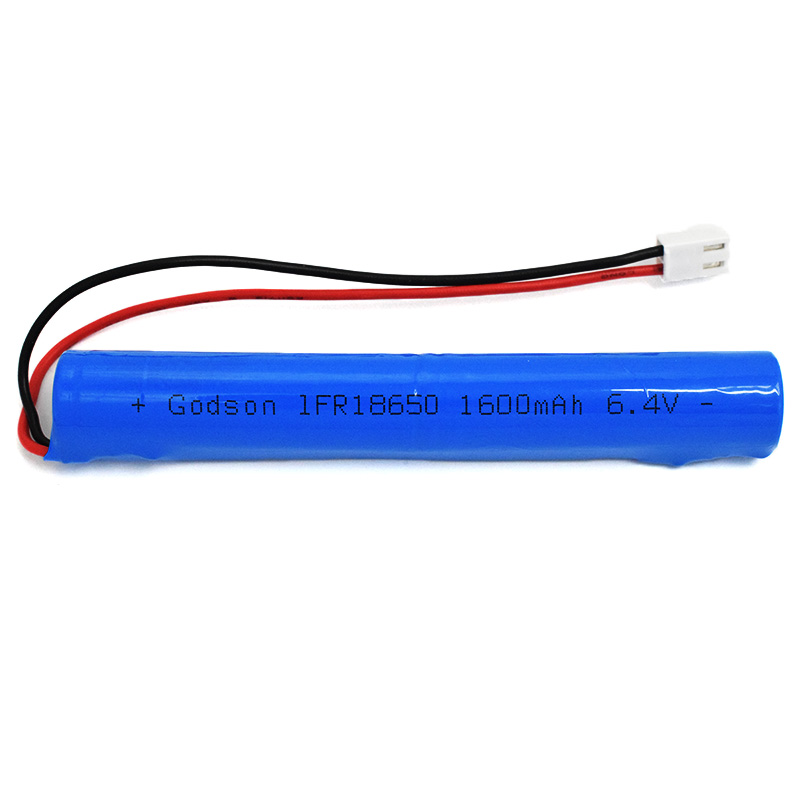 LiFePO4 IFR18650 1600mAh 6.4V
LiFePO4 IFR18650 1600mAh 6.4V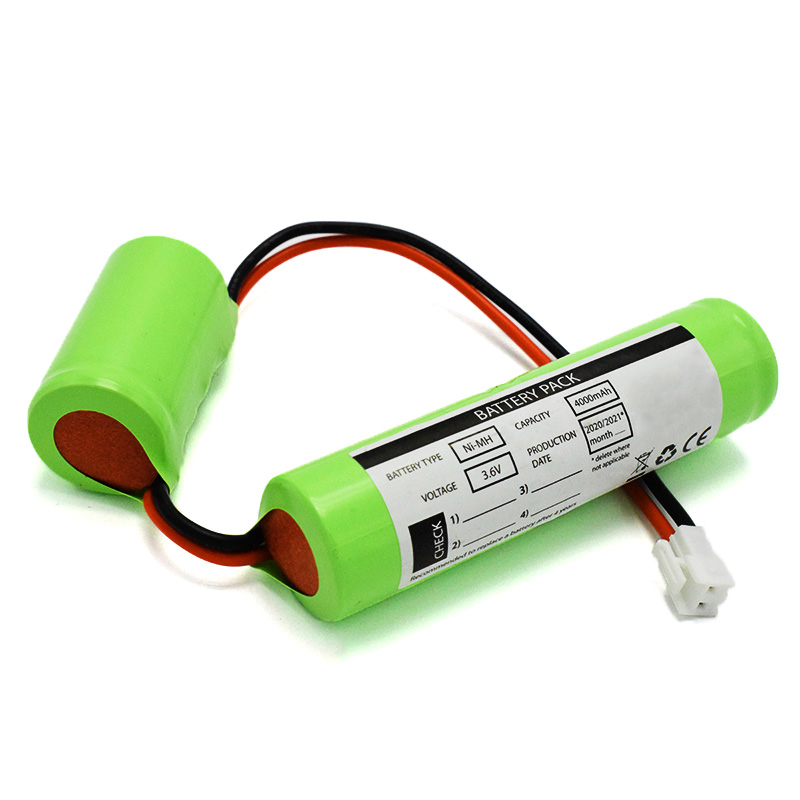 Ni-MH Battery C4000mAh 3.6V
Ni-MH Battery C4000mAh 3.6V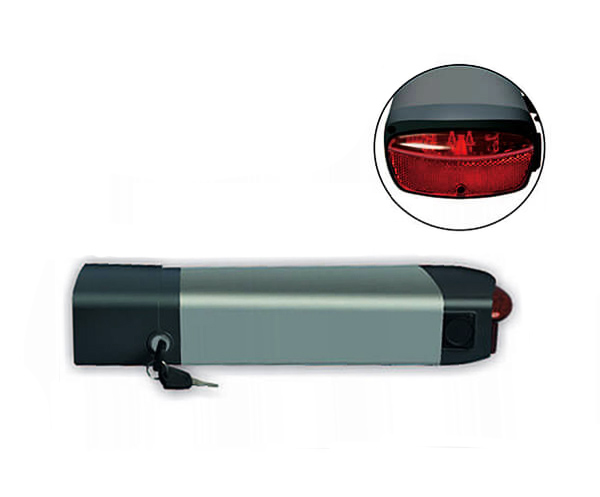 E-bike Battery 48V 10Ah JL-1
E-bike Battery 48V 10Ah JL-1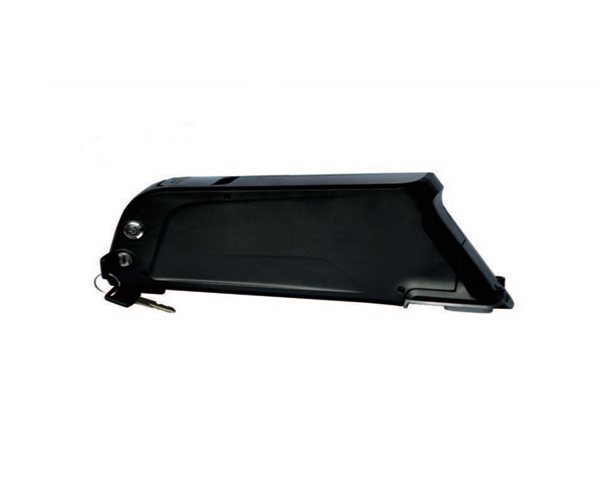 E-bike battery 48V 10Ah Qing Tian
E-bike battery 48V 10Ah Qing Tian